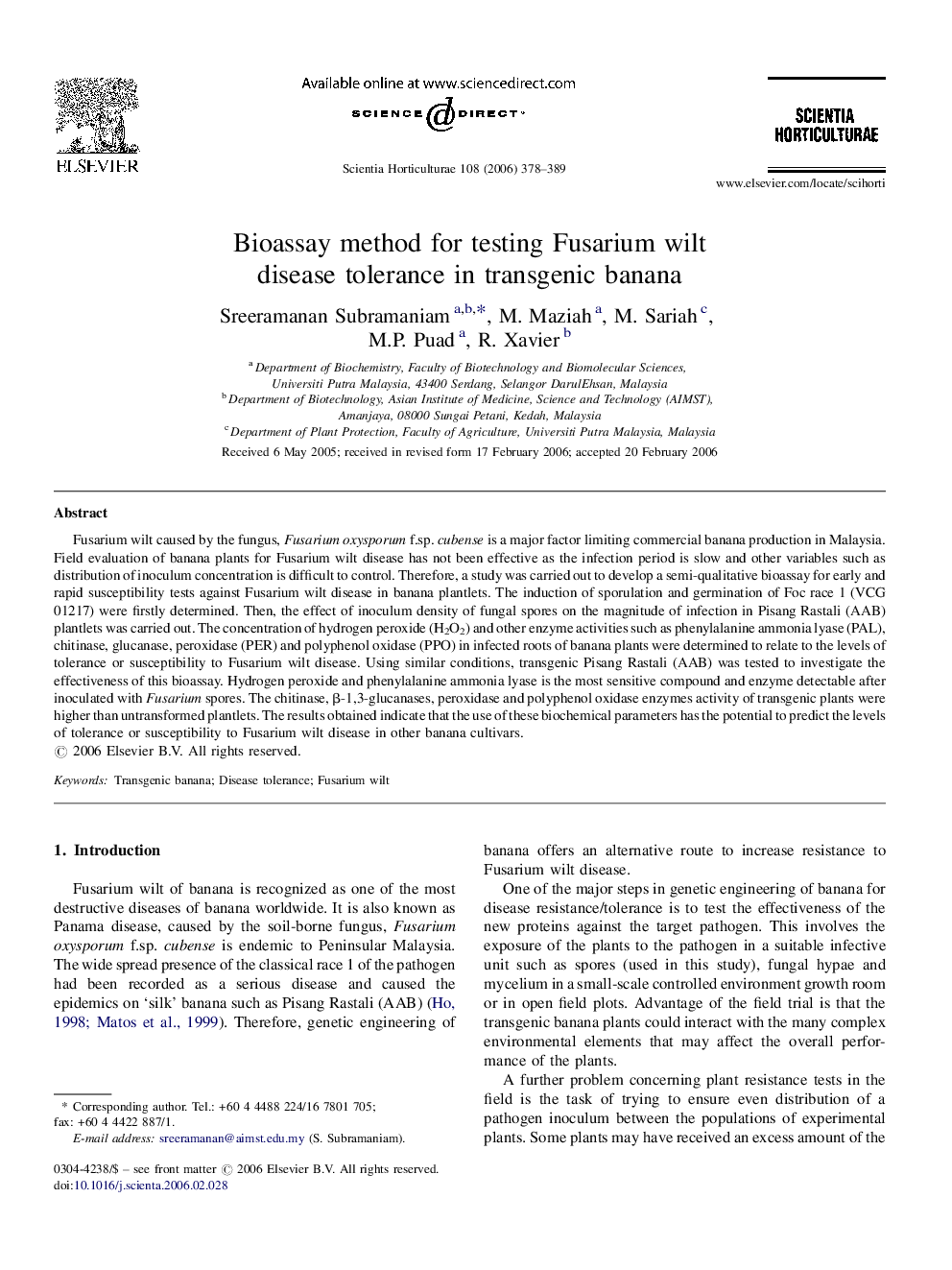| Article ID | Journal | Published Year | Pages | File Type |
|---|---|---|---|---|
| 4569936 | Scientia Horticulturae | 2006 | 12 Pages |
Fusarium wilt caused by the fungus, Fusarium oxysporum f.sp. cubense is a major factor limiting commercial banana production in Malaysia. Field evaluation of banana plants for Fusarium wilt disease has not been effective as the infection period is slow and other variables such as distribution of inoculum concentration is difficult to control. Therefore, a study was carried out to develop a semi-qualitative bioassay for early and rapid susceptibility tests against Fusarium wilt disease in banana plantlets. The induction of sporulation and germination of Foc race 1 (VCG 01217) were firstly determined. Then, the effect of inoculum density of fungal spores on the magnitude of infection in Pisang Rastali (AAB) plantlets was carried out. The concentration of hydrogen peroxide (H2O2) and other enzyme activities such as phenylalanine ammonia lyase (PAL), chitinase, glucanase, peroxidase (PER) and polyphenol oxidase (PPO) in infected roots of banana plants were determined to relate to the levels of tolerance or susceptibility to Fusarium wilt disease. Using similar conditions, transgenic Pisang Rastali (AAB) was tested to investigate the effectiveness of this bioassay. Hydrogen peroxide and phenylalanine ammonia lyase is the most sensitive compound and enzyme detectable after inoculated with Fusarium spores. The chitinase, β-1,3-glucanases, peroxidase and polyphenol oxidase enzymes activity of transgenic plants were higher than untransformed plantlets. The results obtained indicate that the use of these biochemical parameters has the potential to predict the levels of tolerance or susceptibility to Fusarium wilt disease in other banana cultivars.
